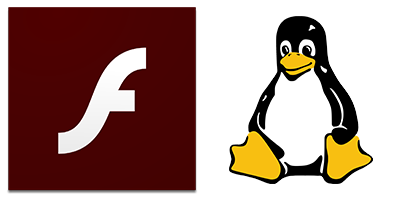Resurrection of the corpse. Four years later, Adobe resumed the update cycle of Flash Player NPAPI for Linux.

In February 2012, Adobe decided to end the release of Flash Player (NPAPI) for Linux . Instead, it was decided in partnership with Google to release the plugin through a single PPAPI interface (Pepper API) in the Chrome browser, common to all platforms. Thus, version 11.2 was the latest standalone Flash Player plug-in for Linux, although Adobe continued to provide support for other platforms, and only updates for 11.2 were released for Linux. At the same time, the PPAPI plugin was updated synchronously with individual plug-ins under Windows and Mac.
After four and a half years, Adobe has changed its position. August 31, 2016 in the corporate blog announced that the development of NPAPI Linux will continue further synchronously with PPAPI.
')
According to Adobe's comment, this decision was made at the request of the community after testing.
Adobe has updated the channel with the beta version of Linux NPAPI Flash Player, raising it to a synchronous state with the latest branches. That is, since version 11.2, the plugin has been updated immediately to the latest version 23. Now the NPAPI Flash Player will continue to be synchronously updated under Linux, Windows and Mac, as it was before 2012.
Security hole
The change in Linux development is related to Adobe's information security policy. In past years, it was planned to completely abandon the NPAPI Linux plug-ins in 2017, that is, to stop even issuing security updates. Now plans have changed. Adobe probably thought it was too great a threat to leave the NPAPI Linux Flash Player full of holes without security updates.
Such a decision is quite logical. Flash Player is considered one of the most vulnerable components in the security system on Windows, Mac and Linux. People install this plugin, mainly to work with outdated websites and some interfaces that are written in Flash, sacrificing the security of their own system.
Limited functionality
The company emphasizes that security is the main cause of policy change. About the functionality of the plugin and new features for Linux users think secondarily. Therefore, in the new version, some functions are not fully implemented, such as 3D acceleration on the GPU and DRM containers for viewing videos loaded with copyright. If users need this functionality, Adobe recommends using Flash Player PPAPI version.
The refusal of additional functionality allowed Adobe to save resources and not spend a lot of effort and money to release a version for Linux. However, even in this version, the plugin is not impressive with the quality of the code. Linux users say that flash content cannot be played simultaneously in two browser tabs.
###!!! [Parent][MessageChannel::Call] Error: Channel error: cannot send/recv ###!!! [Parent][MessageChannel::Call] Error: (msgtype=0xAA0001,name=PPluginInstance::Msg___delete__) Channel error: cannot send/recv If you close one of them, then Adobe Flash flies to the second immediately. However, this is a beta version.
Currently, Flash Player NPAPI is distributed only as 32-bit and 64-bit binaries. Installers will be released later after additional testing. Before installing, it is recommended to make a backup copy of the Flash Player plugin and manually replace it with a new version in the corresponding directory.
Adobe also notes that Fedora-based Linux distributions are not supported in this release.
Release notes for Flash Player 23 and AIR 23 (in pdf format)
Binary Download Page
Thus, now Flash Player NPAPI for Linux changes the status from “almost dead” to “somehow maintained”.
“The corpse is decaying, but it still manages to do PR. Allow him to die in peace alone, which he deserves, ” wrote one of the commentators on the Slashdot forum. - There is nothing here to look, we go further.
“When it was needed, there were no updates. When all do not care, they began to update it. Smart people work at Adobe, ”another Linuxoid agreed with the Phoronix forum. Other commentators are more succinct .
If you look at things objectively, then why don't Adobe update the Adobe Reader program for Linux, which has been stuck on version 9.5.5 since May 2013 (the current version 11.1 for Windows, Mac and Android)?
Source: https://habr.com/ru/post/397411/
All Articles